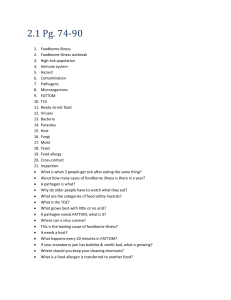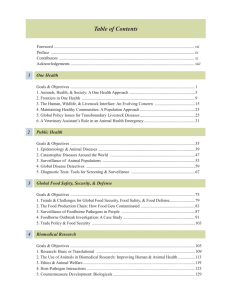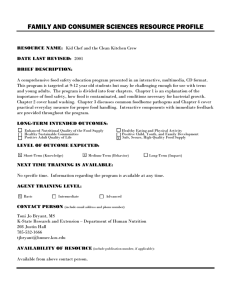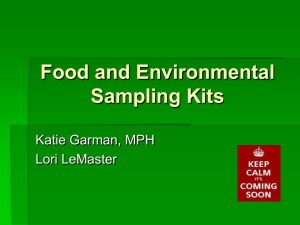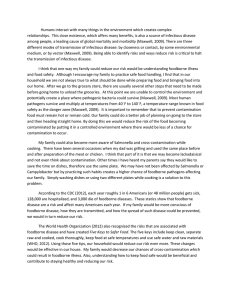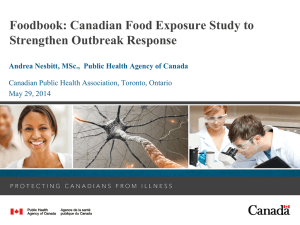THE COUNCIL TO IMPROVE FOODBORNE OUTBREAK RESPONSE FOODBORNE ILLNESS
advertisement
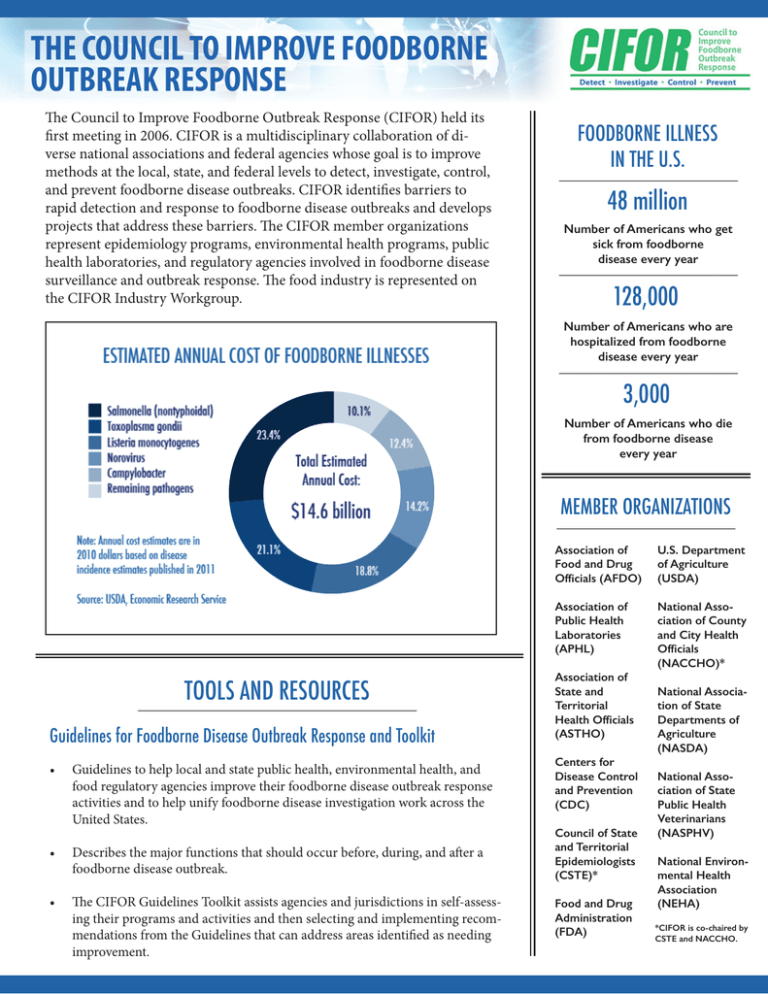
THE COUNCIL TO IMPROVE FOODBORNE OUTBREAK RESPONSE The Council to Improve Foodborne Outbreak Response (CIFOR) held its first meeting in 2006. CIFOR is a multidisciplinary collaboration of diverse national associations and federal agencies whose goal is to improve methods at the local, state, and federal levels to detect, investigate, control, and prevent foodborne disease outbreaks. CIFOR identifies barriers to rapid detection and response to foodborne disease outbreaks and develops projects that address these barriers. The CIFOR member organizations represent epidemiology programs, environmental health programs, public health laboratories, and regulatory agencies involved in foodborne disease surveillance and outbreak response. The food industry is represented on the CIFOR Industry Workgroup. FOODBORNE ILLNESS IN THE U.S. 48 million Number of Americans who get sick from foodborne disease every year 128,000 Number of Americans who are hospitalized from foodborne disease every year 3,000 Number of Americans who die from foodborne disease every year MEMBER ORGANIZATIONS TOOLS AND RESOURCES Guidelines for Foodborne Disease Outbreak Response and Toolkit • Guidelines to help local and state public health, environmental health, and food regulatory agencies improve their foodborne disease outbreak response activities and to help unify foodborne disease investigation work across the United States. • Describes the major functions that should occur before, during, and after a foodborne disease outbreak. • The CIFOR Guidelines Toolkit assists agencies and jurisdictions in self-assessing their programs and activities and then selecting and implementing recommendations from the Guidelines that can address areas identified as needing improvement. Association of Food and Drug Officials (AFDO) U.S. Department of Agriculture (USDA) Association of Public Health Laboratories (APHL) National Association of County and City Health Officials (NACCHO)* Association of State and Territorial Health Officials (ASTHO) Centers for Disease Control and Prevention (CDC) Council of State and Territorial Epidemiologists (CSTE)* Food and Drug Administration (FDA) National Association of State Departments of Agriculture (NASDA) National Association of State Public Health Veterinarians (NASPHV) National Environmental Health Association (NEHA) *CIFOR is co-chaired by CSTE and NACCHO. Target Ranges for Selected Performance Measures in the CIFOR Guidelines • • Standardized performance criteria and metrics promote a common understanding of the key elements of surveillance, outbreak investigation, and control activities, facilitate training of staff, and allow for the aggregation of data to evaluate program effectiveness and identify specific needs for improvement. Provides specific metrics and recommended targets for 16 selected performance indicators in Chapter 8 of the CIFOR Guidelines to help agencies demonstrate their public health performance and effectiveness for foodborne disease surveillance, outbreak investigation, and control activities. Clearinghouse • • An online repository found on the CIFOR website offering foodborne disease outbreak investigation and general food safety resources. • An analysis of foodborne disease surveillance and investigation laws in select states. • A public health practitioner handbook for the implementation of foodborne disease surveillance and investigation laws. A menu of recommended legal provisions for consideration by state and local public health officials and policy makers. CIFOR Industry Guidelines • Guidelines and tools to guide retail food establishments through a foodborne disease outbreak investigation. Taskgroup that developed the guidelines includes representatives from industry as well as local, state, and federal agencies. Economic Evaluation of PulseNet • A benefit-cost analysis of PulseNet USA. • Calculations of measurable direct and indirect costs and benefits of implementing PulseNet. • Model estimates the number of illnesses averted by both food recalls and industry process changes. Laboratory-Epidemiology Integrated Reporting Software • A domestic, open-source software application that combines laboratory data with food exposure (consumption) data into a single daily report. • Goals are to decrease cluster detection time, rapidly identify outbreaks, and increase the percentage of foodborne disease investigations that identify agent, food vehicle, and source of contamination. Visitors are able to search for existing tools and resources as well as submit tools and resources to CIFOR to reviewing and posting. Law Project • • Outbreaks of Undetermined Etiology (OUE) Guidelines • Provides recommendations on “universal” collection, shipment, rule-out testing and long-term storage of foodborne outbreak specimens based on syndromes and specific outbreak profiles. • Designed to provide adequate specimens for second-tier testing and pathogen discovery should an etiology prove elusive. CONTACT CIFOR For more information about CIFOR and to access available tools and resources, visit: www.cifor.us. Contact CIFOR at info@cifor.us.
